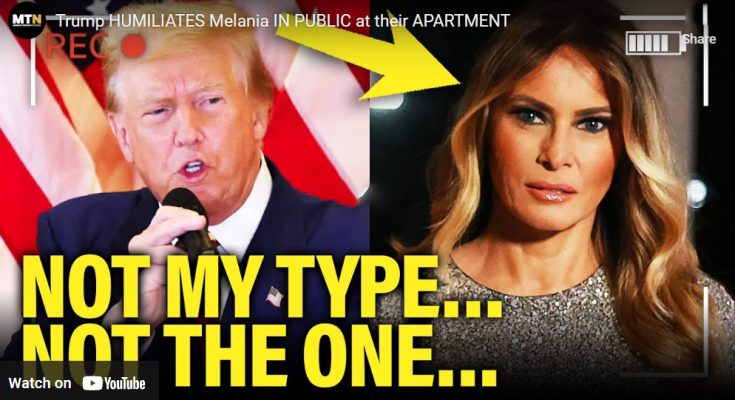In a striking display of public discord, Donald Trump held a press conference at Trump Tower on Friday, where his behavior and remarks left many questioning the state of his marriage with Melania Trump. While he ranted about various allegations of sexual assault against him, Melania chose to remain upstairs in their apartment, refusing to join him even for a moment. This absence speaks volumes about the couple’s relationship, particularly during a highly charged election cycle.

During the press conference, Trump launched into a bizarre tirade, attempting to defend himself against accusations from women like E. Jean Carroll and Jessica Leeds. He dismissed Carroll’s claims, suggesting that a photo of them together could be an AI-generated image, and made the audacious claim that Leeds was “not his type,” implying that her looks were the reason he would never assault her. Trump’s comments were not only dismissive but also steeped in a misogynistic tone that many found appalling.
As Trump rambled on, Melania remained conspicuously absent, a pattern that has become increasingly common. Aside from a few rare appearances, including a brief moment at the Republican National Convention where she seemed reluctant to even kiss him, Melania has largely distanced herself from her husband’s public life. Her absence at this particular event was particularly notable, given the gravity of the accusations Trump was addressing.
This press conference was not an isolated incident; it reflected a broader trend of Melania stepping back from the spotlight. In one instance, she refused to attend an event where Trump was accepting a “Child Advocacy Award” on her behalf, further highlighting the strained dynamics of their relationship. Such actions have led many to speculate about the nature of their marriage, which has often been described as transactional.
Trump’s remarks during the press conference were a mix of defiance and absurdity. He claimed that the allegations against him were fabrications, asserting that wealthy individuals often become targets of false accusations. This line of reasoning, however, did little to quell the growing concerns about his behavior and the implications of his statements. At one point, he even suggested that if he had indeed assaulted someone, it would have been reported immediately, failing to acknowledge the complexities of trauma and reporting.
The media’s portrayal of Melania has also been a topic of discussion. While she has often been depicted as a glamorous figure, her role in Trump’s life has raised eyebrows. Critics argue that her silence amidst the controversies surrounding her husband reflects complicity in his actions, while others see it as a sign of her desire to maintain distance from the chaos of his political career.
Moreover, the juxtaposition of Trump’s criticisms of New York City, which he has labeled as a “violent” and “terrible” place, against the backdrop of his son Barron attending NYU, adds another layer of complexity to the narrative. Trump’s contradictory statements about the city raise questions about his family’s actual sentiments toward their home.
In light of these events, the public’s perception of both Trump and Melania continues to evolve. As Trump faces mounting legal challenges and public scrutiny, Melania’s absence from his side raises questions about the future of their relationship. The disconnect between their public personas and private lives is becoming increasingly evident, leading many to wonder how much longer they can maintain the façade of a united front.
Ultimately, this episode serves as a reminder of the complexities of personal relationships in the public eye. As Donald Trump continues to navigate his legal battles and political ambitions, the implications for Melania and their marriage remain uncertain. The public is left to ponder the authenticity of their partnership as they witness the unfolding drama, both in the courtroom and in the realm of public opinion.



